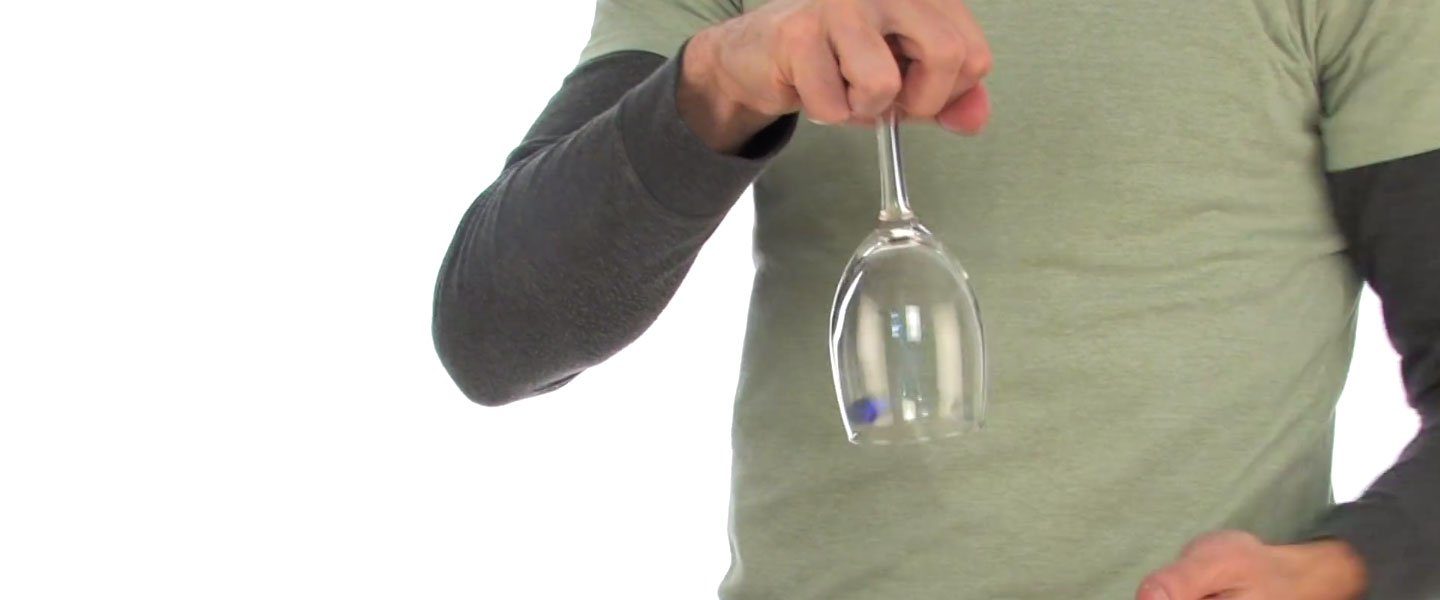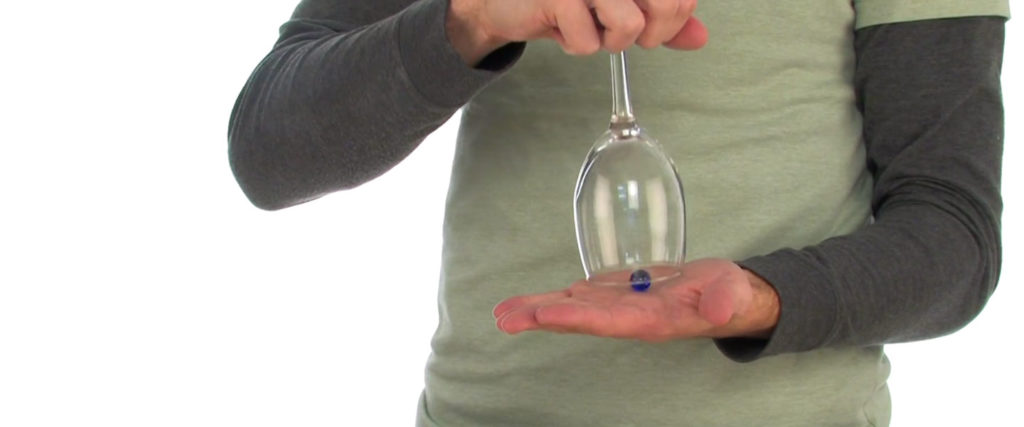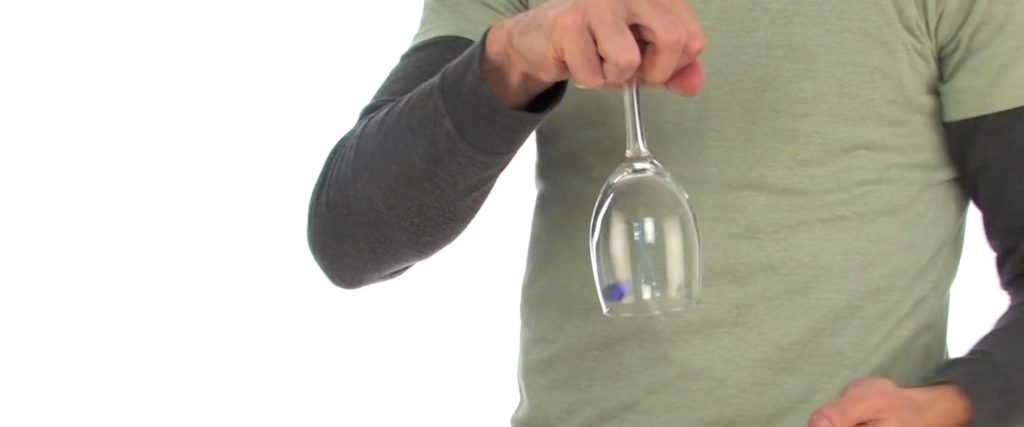Anti-Gravity Water
Water in rivers, in a glass, or falling from clouds obeys gravity. It’s going to fall towards the ground because of the physical pull of […]

Recently, the Spangler Labs Research Team took a trip to an amusement park. (It wasn’t for fun, it was for work but it was fun.) As a group, they boarded a ride called the “Gravitron.” They stood in a circular room with their backs against a padded wall and the room began to spin. Faster and faster it went when suddenly, the floor dropped out from under them but they were pinned to the wall! They found a way to recreate this ride on a small, kitchen-science scale and this activity is how they did it.

Hold the glass upright by gripping the flat base with one hand. Drop the marble into the glass with the other.

Rotate the glass to get the marble moving in fast circles the inside the glass. Keep the ball moving and tilt the glass so that it’s first, on its side and then, upside down.

Begin again except his time, hold a hand out flat with the palm up and place the marble in the center of the palm.

Don’t move your palm but rotate the upside down glass again so it taps the marble, picks it up from your hand, and causes the marble to spin inside the glass. You take it from here.
The Marble Gravitron is a smaller version of what you can experience on the amusement park ride of the same name. The inertia of the spinning marble is an outward “pushing” force. The glass supplies another inward “pushing” force that keeps the marble moving in a “uniform circular motion” against the wall of the glass. The force of the glass is centripetal force, a force that causes a body follow a curved path. The combined forces of the spinning marble and the glass create a relative force greater than gravity and the marble stays inside the glass. Well, it stays there until you get tired, the spinning slows, and the downward force of gravity takes over again. This is a demonstration of small-scale, artificial gravity in your hands.
The Gravitron uses a concept called centripetal force or centripetal acceleration. This is similar to tying an object on the end of a string and spinning it around your head. The string holds it in a circular path. The biggest difference is that in a Gravitron, you’re supported from behind by a wall rather than from the center by a rope.